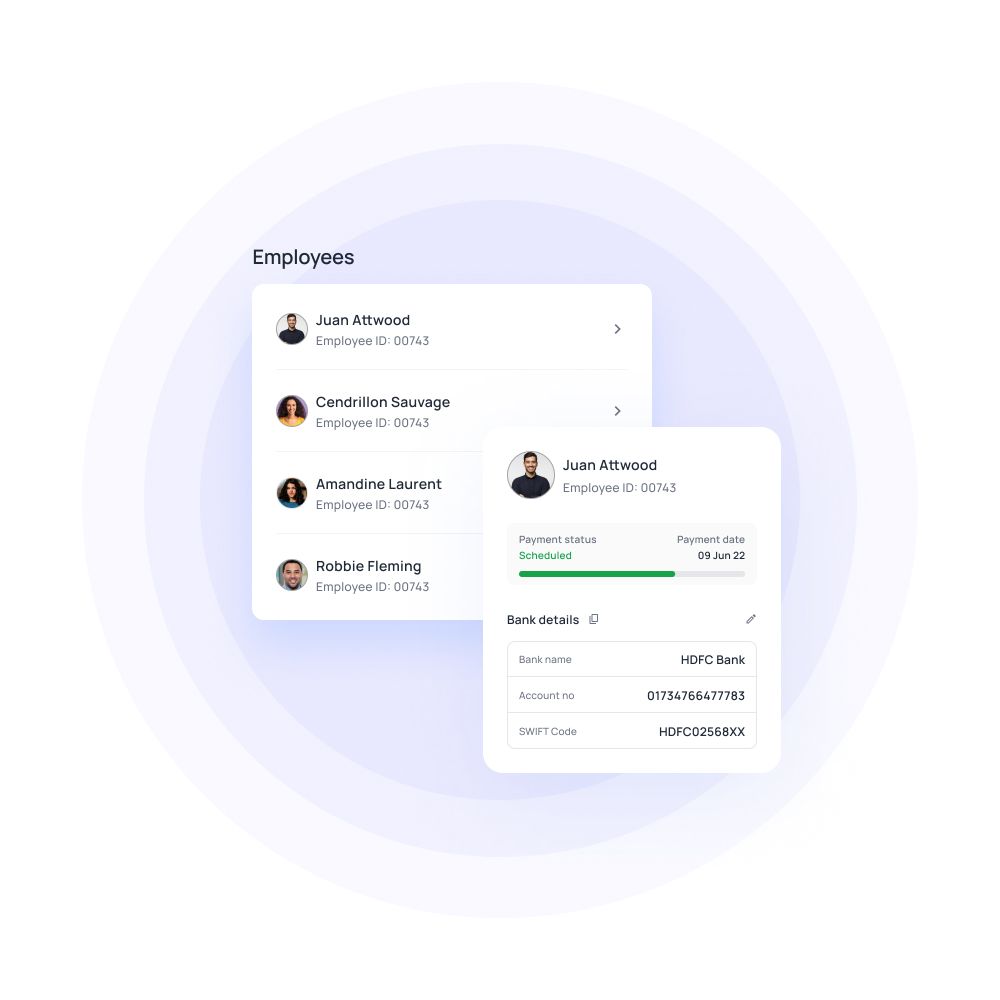Why consolidated dashboards are key to managing multi-entity finances and how to use them?
The efficiency of a business relies largely on the timely delivery of goods and services to your teams, all of which form the backbone of crucial operations. None of that would be possible without timely vendor payments, which are processed by your accounts payable team.
At a time when automation is proving to be one of the best ways to boost productivity and provide comprehensive solutions to business financial management, the importance of consolidated dashboards and data analytics is clearer than ever.
By leveraging the features that accounts payable software offers, businesses can recognize areas for improvement, implement effective solutions, and delegate repetitive manual tasks to the software in order to free up the bandwidth of employees.
What is a consolidated dashboard?
Good accounts payable software—or AP software—does more than automate payments. It provides a consolidated dashboard, which contains all the information your team needs to track their AP operations and make important decisions on the basis of reliable, actionable data.
A consolidated dashboard acts as a central repository for all the data the software processes, which is viewable in easy-to-understand formats. This data can include reminders for upcoming payments, payment schedules for advanced payments, as well as essential KPIs that all accounts payable departments should be tracking.
It also provides graphs and charts that contain insights into the company’s spending patterns, which are data that can be used to make decisions surrounding budgeting, cost-cutting, and effective use of resources.
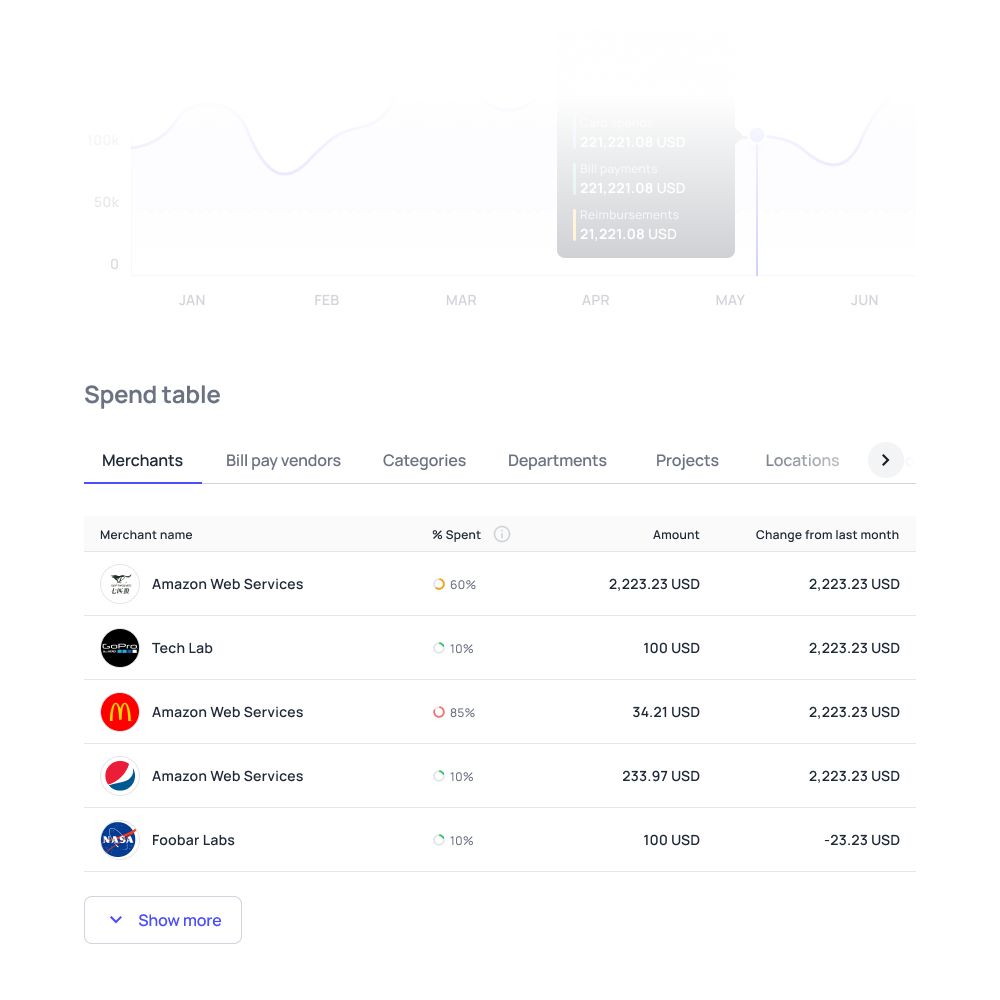
Common information that you can find in your consolidated dashboard
This is the most important information available on a consolidated dashboard of any AP software. It is a set of reminders for upcoming payments. This data helps the AP team keep track of pending payments so that all vendor payments are processed on time and there is no disruption of essential business operations.
In addition to payment reminders, AP consolidated dashboards also help the AP team track key performance indicators (KPIs). These KPIs are crucial for the department to observe the efficiency of current accounts payable processes, and improve any roadblocks. It also acts as a comprehensive view of how well the software is being leveraged.
Graphs and charts are an excellent visual data analysis tool for a quick, yet accurate view of the company’s accounts payables. These can display information such as the percentage of bills paid, spending pattern comparisons over a specific period, as well as the pattern of spending across different departments or vendors.
If your AP software also has procurement software capabilities or a vendor management system, then the AP dashboard can also display information related to specific payment terms for vendors. Whenever payments are made early, then the availability of early payment discounts can also be viewed on the dashboard.
Effective automation software has a user interface that is easy to navigate, and easy for all employees to use without requiring intensive training. For this reason, most consolidated dashboards have easy-access navigation shortcuts to be able to move quickly through different analytics and payment schedule information.
Accounts payable software usually keeps a record of all vendor payments made, with transaction information recorded alongside other documentation like purchase orders, invoices, approval trails, and receipts. A consolidated dashboard would make it possible for transactions to be searched for easy access to specific payment information.
Importance of a consolidated dashboard in AP software
Knowing what a consolidated dashboard offers, therefore, makes it easier to understand just how effective these dashboards can be in improving the operations of finance and accounts payable teams.
1. Holistic financial overview
One of the primary functions of a consolidated dashboard is to give a holistic financial overview for the finance department to access. It allows the accounts payable team to get an all-rounded understanding of their operations at a quick glance, without doubting the accuracy of the data.
2. Real-time insights at a glance
The data that consolidated dashboards provide is always up to date, informing the analytics algorithm in real time. This means that real-time insights based on live transaction records, payment status notifications, and automated invoice processing keep track of the exact dues owed to vendors, as well as the latest spending patterns.
3. Enhanced budgeting & forecasting
The availability of updated data gives the accounts payable department a clear understanding of what dues are owed to vendors, what upcoming dues will get added, and what percentage of these dues is paid. It allows for realistic budgeting decisions and lets teams accurately forecast the future of the company’s financial health.
4. Improved compliance & readiness
Business operations, especially payments to vendors and partners, require compliance with laws, local regulations, and international standards of safety. By using a consolidated dashboard to keep track of payments, the job of ensuring complete adherence to regulatory requirements and being ready for audits is made much easier.
5. Cost efficiency & resource optimization
It’s important to have a comprehensive set of insights into your company’s spending pattern to recognize inefficiencies in vendor management. Spending patterns allow teams to pinpoint where resources are bleeding (duplicate or erroneous payments, redundant vendor contracts, etc.) and to take actionable steps toward improving the direction of cash flow.
Take control of your finances with Volopay’s consolidated dashboard
How leveraging consolidated dashboards for decision-making can give you a competitive edge
The benefits of consolidated accounts payable dashboards are not limited to your own team’s operational efficiency. That efficiency directly translates to performance improvement and data-driven strategic planning, which gives your company a competitive edge in the markets it operates in.
Performance benchmarking
Access to updated KPIs on a consolidated dashboard gives finance team heads and accounts payable managers insight into the team’s efficiency and performance. This allows for realistic and accurate performance benchmarking, which creates a standard of operational efficiency to aim for and helps create achievable future goals.
Uncover insights into customer trends
With spending data (and the ability to analyze spending patterns) readily available, it becomes easier for accounts payable teams to gain meaningful insight into trends. It gives a clear understanding of what spending behaviors the various departments lean towards, which is valuable information for forecasting cash flow and realistic budgeting.
Spot issues early
A major issue that financial managers face is being hit with cash drainage out of the blue. Finding out that the cause of a dried-up cash flow is erroneous or fraudulent payments, or simply loss of resources due to poor planning, can be a major hit.
Access to live data makes it easier for a head of finance or CFO to spot problems much earlier and address them before they create a significant issue.
Informed strategic planning
Effective strategy is driven by useful and actionable data. In addition, this data must be accurate and up-to-date, so that decision-makers rely on the latest information in order to create achievable goals and forecast realistic scaling of operations. A variety of data available in a customizable, accessible format is key to doing this.
Insights into real-time data
By automating accounts payable process, finance teams can leverage the power of software where human actors might be slower. This means live updates on invoices, orders, and payments being made on behalf of the company. With this data coming in real time, accounts payable teams are able to keep an eye on every dollar spent as soon as it is spent.
Transforming data into decisions: the role of visual analytics on financial leadership
The end goal of automating accounts payable with the help of accounts payable software is to take advantage of real-time updates and get ahead of the curve. Visual analytics make this process much smoother and ease the burden spent on manual data processing.
Enhancing financial visibility
It’s all too common for teams to have access to financial information but be unable to process it in a helpful way. Multiple datasets are pointless when they don’t give a clear picture from which teams can infer any tangible or meaningful conclusions. Visual depiction of live financial data improves financial visibility for everyone in the company.
Identifying key trends
Trends and patterns are much easier to spot when presented in a visual medium. The conversion of accounts payable payment data and KPIs into graphs and charts makes it possible to see the bigger picture without the need to visualize crunched numbers, and key trends crop up much quicker for an improved understanding of operations.
Mitigating risks through visual alerts
Purely from a psychological perspective, alerts get easily missed when they blend into a sea of data. When payment due dates, errors, and cash flow hazards are lost among spreadsheets and forgotten emails, risk mitigation becomes much harder and things slip through the cracks. Visual alerts make it possible for immediate contingencies to kick in.
Improving forecasting accuracy
Data forecasting relies entirely on the accuracy of data, and after a certain amount of time, outdated information is considered inaccurate data.
With the help of real-time updates, which inform trends and KPIs, financial managers are able to improve the accuracy with which they forecast the company’s financial performance. This, in turn, improves the achievability of strategic growth plans.
Facilitating cross-team collaboration
One of the biggest problems businesses face is the lack of cross-team collaboration when it comes to financial data. Other departments might not have an immediate understanding of how to analyze these numbers, and even within the finance department, there might be a lack of understanding between different teams.
Visualization of data creates information visibility for all teams for smoother collaboration.
Introducing Volopay: consolidated dashboard for streamlining multi-entity finances
Volopay is an all-in-one expense management solution that includes a powerful dashboard for accounts payable analytics, easing the burden on financial leaders.
The accounts payable software not only takes care of payments but also has a live dashboard that offers real-time updates and insights into your company’s financial health, cash flow, as well as spending patterns and trends.
All of this information allows financial leaders to operate on a smoother level and iron out any bottlenecks within the accounts payable process.
Taking care of AP in an end-to-end fashion, Volopay’s dashboard offers insights into invoice processing and allows you to generate payments, track their status, and reconcile all payments at the end of the reconciliation period.
Additionally, the ability to customize the dashboard based on your company’s specific needs makes it possible for your team to take maximum advantage of the dashboard’s capabilities.
Empower your finance team with tailored dashboards by Volopay
Importance of Volopay’s consolidated dashboard for your business
Volopay’s consolidated dashboard has a lot to offer, and to understand exactly how it can benefit your team, it is important to understand its features. These features, when leveraged to their full potential, ease a significant burden on your finance teams.
Centralized financial management
Volopay’s platform brings all your financial automation onto one platform, accessible easily through multiple devices.
Through the same account, the AP team can process invoices and vendor payments, managers can approve reimbursements, payroll can be processed in advance, and employee expenses can be managed through corporate card tracking.
This creates a single, accessible portal for centralized financial management.
Real-time data access
The consolidated dashboard on your Volopay account is constantly updated with live transaction tracking and payment information.
This access to real-time data makes it possible for finance teams to have minute insight into every dollar being spent from the company’s fund pool and informs all analytics so that reported data is reliable and accurate.
This real-time data is also easily transferred across platforms with the help of any native integrations to ERP and accounting software.
Streamlined accounts payable process
The Volopay accounts payable software automates accounts payable tasks, in turn streamlining your AP team’s work.
These automations work on an end-to-end basis, which frees up your team from intensive manual labor every step of the way.
Purchase orders, invoices, approvals, payments, tracking, receipt, and reconciliation can all be automated through smart workflows on the same platform, which quickens the entire payment process.
Data-driven strategies for improved cost-efficiency
Effective cost-efficient strategies can only be created and implemented if those decisions are made with reliable data.
Volopay’s dashboard provides a customizable platform to transform real-time updates into data that can be processed and analyzed based on your organizational needs.
This data can then be used to inform strategic decisions, effective financial forecasting, and overall growth strategies by means of making data-driven decisions to improve cost-efficiency.
Enhanced visibility into multi-entity performance
Volopay supports organizations that operate across the globe, including those that have multiple entities in multiple countries.
The multi-currency wallets allow teams to make payments to vendors anywhere, in a currency of their choice. All this payment data is visible on the same dashboard, with accounts linked to every entity presenting real-time insights into spending without the need to switch accounts.
It creates visibility into performance across multiple entities, as well as the ability to compare data and provide a global picture.
Visual alerts for risk management
Risk management is a vital part of protecting a company’s finances and preventing fraud, as well as severe cash loss.
Large transactions of suspicious amounts often get missed in mounds of data, and smaller transactions leading to exponential loss are often missed altogether.
Volopay’s visual consolidated dashboard creates visible alerts for efficient risk management to prevent losses through overdue payments and duplicate payments, and flags erroneous or non-compliant transactions.
Highlights of Volopay’s consolidated dashboard
Volopay’s consolidated dashboard is designed to cater to your company’s needs. Not every team needs access to every single piece of data—that is, actually, one of the downfalls of hoarding massive amounts of manually processed data.
Instead, with Volopay’s dashboard, you can create customizable views so that only pertinent information is available and decisions can be made quickly.
Your Volopay account allows you to generate reports based on your requirements and also sends payment statements formatted to your needs.
Every organization’s reporting requirements depend on internal company policy, intention on how to use the data, as well as regulatory frameworks. The dashboard helps automatically generate reports based on these requirements.
The data on the Volopay dashboard is updated in real time. This includes received purchase orders and invoices, scheduled payments, initiated transactions, transaction statuses, receipt and payment confirmations, and data mapping for reconciliation and bookkeeping.
All this data coming in is continually updated and synchronized at any given time to prevent decisions based on obsolete information.
A major benefit of accounts payable automation software from a CFOs perspective is the access to a user-friendly interface to manage data.
The Volopay dashboard has customizable shortcuts, which can be easily tailored so that all necessary tabs & information are available to your team with the click of a button.
The data analytics feature on the Volopay dashboard is not a stationary formula. Instead of simply processing data and displaying analytics graphs, the dashboard has interactive elements.
This means you can control what data you see, and also interact with it to gain better insight into the information being displayed.
Volopay has native integrations with leading software, such as ERP software, HR management tools, and accounting software (such as Xero, Netsuite, Deskera, QuickBooks, MYOB, and more).
This native integration creates a two-way sync to transfer accurate data seamlessly and make more informed decisions.
Volopay utilizes charts and graphs to display analytics and spending patterns. This serves two purposes—it makes data presentable in a quick manner, which prevents the need to comb through numbers, and it makes data accessible to multiple departments and team members for transparency and visibility.
Your Volopay dashboard can be configured based on your customizable organization needs—this includes how the information is presented, and the format in which reports are generated, all of which help meet your company’s in-house policies as well as local regulatory policies on documentation formats.
You can configure your Volopay dashboard with filters that allow you to immediately access data that you require at the moment, instead of fielding payment and reconciliation information over large periods of time. This is particularly useful for organizations dealing with large payment volumes.
Effortless steps to harness Volopay’s consolidated dashboard
You’ve understood the capabilities of Volopay’s consolidated dashboard, but it’s also important to know how to harness them. In order to truly gain an advantage and a competitive edge, it’s important to understand how exactly to use the dashboard to its full potential.
Kickstart by setting up your dashboard
The first step to leveraging Volopay’s dashboard is setting it up based on your specific needs. Based on your custom requirements, you can set up wallets, user accounts, and user permissions for easy data access.
Integrate financial data from all entities
For accurate data analytics, you need access to accurate data. Set up your account using native integrations that connect your Volopay account to the ERP, HR, or accounting software of your choice so that data is accessible across platforms.
Customize for the metrics only you need
Metrics are only as helpful as they are being used. You can set up your dashboard and customize it so that only the metrics that are relevant to your team are visible, and those that are not required can be hidden out of disruptive view, allowing your team to focus on the data that drives meaningful insights and actions.
Configure alerts for payment schedules & KPIs
Set up alerts to ensure that all your vendor payments are met and your KPI targets are on track. Configure permissions and notification settings so that all relevant managers and team leads receive alerts for KPI performances and statements, while your AP clerks get notified on invoice and payment statuses.
Start making your business transactions
Set up your business account to start making payments. You can also set up a multi-currency wallet if you intend to send and receive payments in multiple currencies. Once this is done, you can start settling invoices, reimbursements, and payroll payments.
Stay ahead with real-time insights
The Volopay dashboard is constantly updating based on the latest invoices, transaction information from payments, and the newest spending patterns based on employee expenses. Keep track of these with real-time insights to stay ahead of forecasts.
Analyze trends with visual data representation
All spending patterns are presented through visual graphs and charts, making it easier to keep track of budget utilization, cash flow, and spending patterns. Analyze trends to know which vendors are being paid the most and which payments are constantly overdue.
Transform insights into actionable strategies
With the help of all the information on the consolidated dashboard, your Volopay account provides insights to make data-driven decisions. This comprehensive view allows you to analyze metrics & trends to map out actionable steps to achieve your growth strategy.
Elevate your CFO game with consolidated financial dashboards
Real-world impact: an impactful case study from Volopay
The most common use case for a consolidated dashboard among clients is the need for real-time updates, actionable insights, and automation to free up roadblocks in the accounts payable process. Most organizations are capable of manually capturing data but it is never used in a meaningful way.
How our client transformed their finances with a consolidated dashboard
Volopay’s all-in-one dashboard presents a bird’s eye view of all financial operations within the company. These include corporate card requests, card payments for employee expenses, payroll payment schedules, invoices from (and payments to) vendors, and reimbursement requests.
It creates a single, interactive dashboard, customized to customer needs, to have complete visibility into the company’s cash flow. This makes it possible to get ahead and make financial decisions that can significantly and reliably contribute to future organizational scalability.
Before vs. after: measurable benefits for our client
One of the primary benefits of a consolidated dashboard is visibility into invoice processing. Pending invoices are trackable through the dashboard, which makes it possible to process them in a timely manner.
Where clients were missing payments before, with the help of a consolidated dashboard, invoice processing can be automated, and due payment reminders pop up on the screen so that payment approvals and transactions can be initiated in a timely fashion.
In addition to this, all payment updates are reflected through real-time transaction notifications. The data from these notifications creates a visual understanding of spending patterns and the current state of the company’s cash flow.
Before, clients were unable to grasp a clear understanding of the company’s funds even if payments were being made on time. With the help of a consolidated dashboard, the visibility into the cash flow has informed cost-effective decision-making.
Finally, KPI tracking is much easier through a consolidated dashboard. Before, clients could only track KPIs by manually processing accounts payable metrics. These metrics, even if calculated accurately, were unable to create meaningful impact when they weren’t presented in an actionable manner.
The consolidated dashboard calculates KPIs based on real-time data, which creates immediate visibility into operational efficiency and also makes it easier to spot obstacles that need to be addressed.
How our client outperformed competitors
Clear insight into accounts payable processes, by means of a consolidated dashboard, creates a repository of data that puts organizations at a competitive advantage.
While competitors continue to make delayed decisions and have trouble following their growth strategies, clients using Volopay’s consolidated dashboard are able to quickly extract useful data and insight from the live dashboard.
This data is not just a set of numbers that never get utilized. The dashboard provides transparent visibility with automated analytics, so critical information is always apparent and quick decisions can be made in an informed manner, providing our clients with an unmatched edge in cost-effective solutions and financially sound growth strategies.
The data also helps with accurate forecasting, allowing for better contingencies to be placed and timely risk mitigation, giving clients security to make smart and fruitful financial decisions compared to competitors.
Elevating financial oversight: key metrics every finance leader should track
Metrics form a significant part of important data that finance leaders should have access to. These metrics allow for a clear understanding of the operational efficiency and overall financial health of the business, and finance leaders should readily have access to them for immediate action and accurate forecasting.
Cash flow monitoring
● Definition
There are multiple types of cash flow that a finance leader should track, the primary being the net cash flow. This gives the basic understanding of cash movement in and out of the company, alongside other cash flow metrics that track operating cash flow, investing cash flow, and so on.
● Example
The net cash flow is the difference between the total cash inflow and the total cash outflow. If the total cash flow of a company (including operations, investing, and financing) is $2 billion, and the total cash outflow is $550 million, then the net cash flow is $1.45 billion.
Invoice processing time
● Definition
Invoice processing time is the average time that a company takes to settle a single invoice. This is calculated as the time taken from the moment an invoice is received till the moment the invoice is paid and settled.
● Example
If a company processes 100 invoices in a month and the time taken to process them is 600 hours, then the average invoice processing time for that month is 6 hours per invoice.
Accounts payable turnover ratio
● Definition
The accounts payable turnover ratio calculates the ability of a business to pay its dues to vendors and creditors. It is calculated by looking at the average of AP payments made during a specified time period against the total purchases/dues throughout the year.
● Example
If a company makes $10 million worth of purchases and has an open accounts payable balance of $2 million at the end of the year (where $2 million is the average accounts payable for the entire year), then the accounts payable turnover ratio is 5 for that year.
Financial forecasting accuracy
● Definition
Financial forecasting accuracy calculates the difference or percentage error between the actual value versus the projected value over a period—this can be for payables, sales numbers, sales value, or specific cash flows.
One of the ways to do this is with the mean absolute percent error (MAPE), which is the average of absolute percentage errors (APE). Absolute percent error is calculated by
( ( Forecast value – actual value ) / Actual value ) x 100
● Example

MAPE = ( 3.4 + 4.6 + 5.8 ) / 3 = 4.6%
Accounts payable aging
● Definition
Accounts payable aging consolidates the age of invoices to gain a full understanding of the company’s cash flow and the number of invoices that remain unpaid. This data helps identify issues with vendor service delivery and payment delays.
● Example
Accounts payable aging is calculated in buckets or windows. The most common ones are 0–30 days, 31–60 days, 61–90 days, and 90+ days.
If a company has total accounts payable of $100,000 ($10,000 in the 90+ days bucket, $20,000 in the 61–90 days bucket, $25,000 in the 31–60 days bucket, and $45,000 in the 0–30 days bucket) then the aging percentage is as follows.
Current (0–30 days) = ( 45,000 / 100,000 ) x 100 = 45%
31–60 days = ( 25,000 / 100,000 ) x 100 = 25%
61–90 days = ( 20,000 / 100,000) x 100 = 20%
90+ days = ( 10,000 / 100,000 ) x 100 = 10%
Explore the future of finance management with Volopay
Impact of Volopay’s consolidated dashboard on key business entities
Chief Financial Officer (CFO)

Real-time financial insights
CFOs can benefit from a consolidated dashboard by accessing real-time financial insights into the company’s payment patterns and cash flow forecasts. This allows leaders to make smart decisions to achieve operational efficiency by creating an actionable framework using the latest transactional data and clear visibility into the accounts payable process.
Enhanced financial forecasting
Financial forecasting is exponentially improved by data that is not only updated live but is also varied in its range. Customizable consolidated dashboards provide specific data based on a CFO’s requirements, making it possible for financial forecasting to be based on metrics that are relevant and pertinent to the organization’s scaling and growth strategy.
Improved risk management
The safety of the company’s finances is as much the responsibility of the CFO as their spending patterns. With a consolidated dashboard, CFOs have constant visibility into payments and the cash flow. This allows for advanced risk management by identifying bottlenecks and leaks and also allows for timely risk intervention to prevent irreversible mistakes.
Finance department
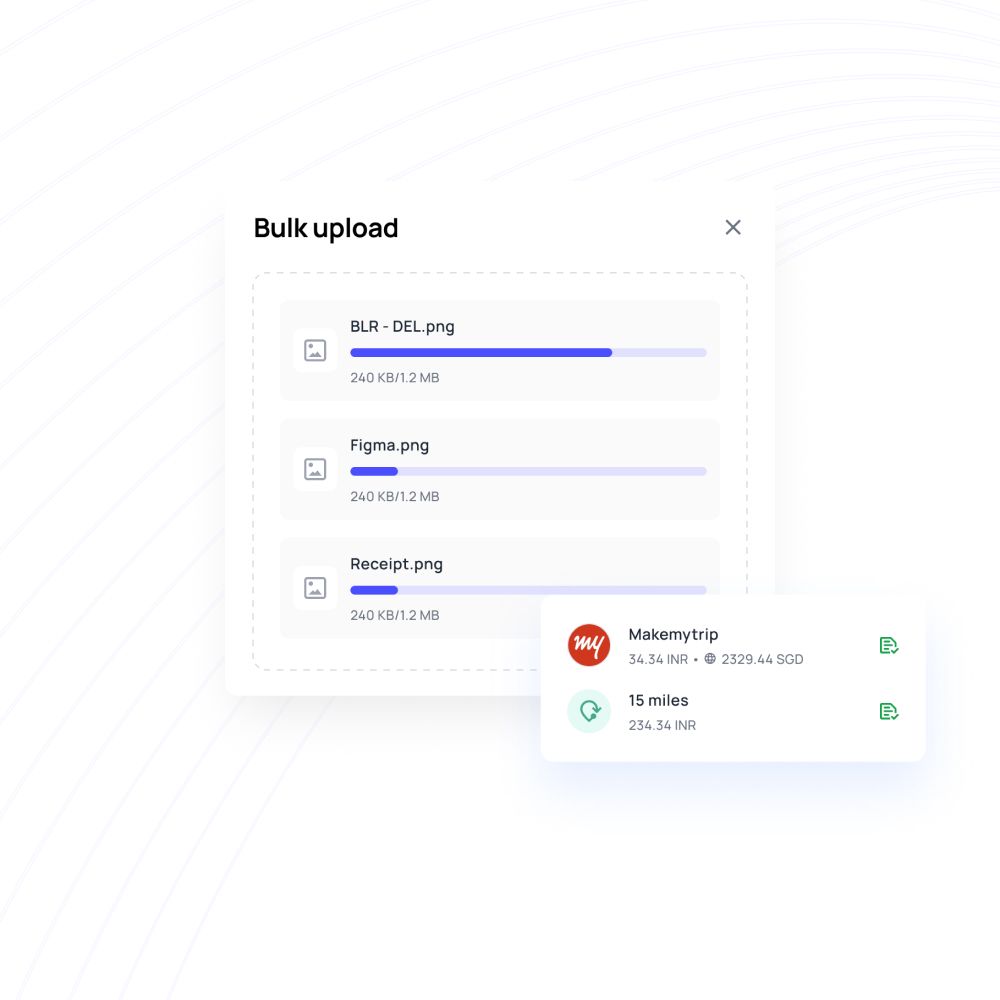
Streamlined financial reporting
Finance departments often spend more time collecting data to write reports, and compiling these reports in a meaningful way, instead of actually using the reports to glean actionable information. With the help of a consolidated dashboard, the department has direct access to data that is automatically collected, streamlining financial reporting.
Enhanced analytical capabilities
Human analytics is limited based on an employee’s knowledge base and pattern recognition. Instead of valuable hours wasted simply trying to infer data, a consolidated dashboard infers the data based on your custom requirements. This way, members of the finance department can focus on actually using the inferred information to make key decisions.
Collaboration & communication
Transparency is a key factor for effective collaboration and communication. A visible consolidated dashboard allows your finance department to have the same, accurate information across the board. It removes obstacles in communication data and also makes collaboration smoother by presenting all information in one place for transparent access to key stakeholders.
Accounts payable department
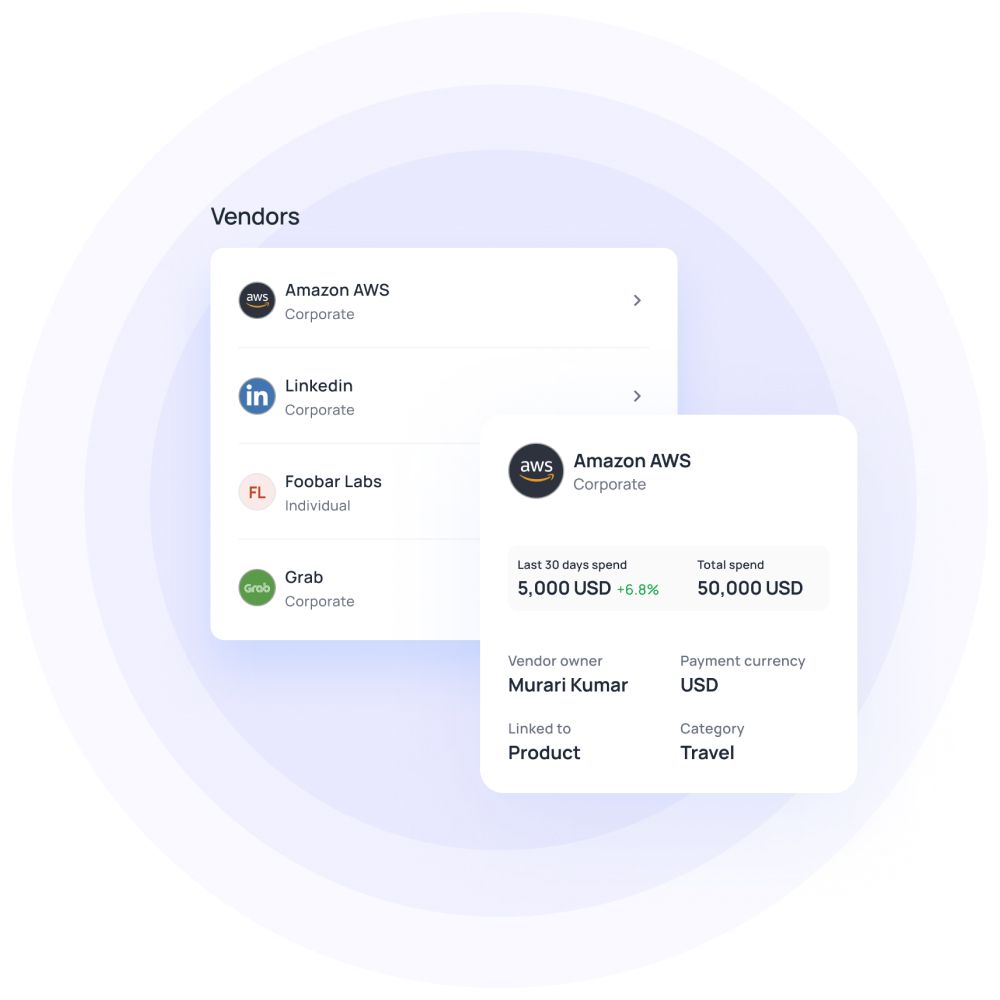
Improved invoice management
Efficient invoice processing relies on updated insights into a company’s cash flow, existing dues to vendors, as well as the upcoming payment schedule. A consolidated dashboard presents payment schedules and due reminders at a single glance for the AP team to understand how quickly an invoice needs to be processed.
Vendor performance insights
Access to vendor payment data provides valuable insights into vendor performance. By consolidating purchase orders, invoices, and delivery information on one dashboard, you can assess the effectiveness of vendor contracts and fulfillment capabilities. This centralized view also aids in negotiating better contracts based on vendor performance and early payment data.
Automated workflow efficiency
Automated workflows streamline operational bottlenecks and delays. By implementing a multi-level workflow for invoice processing, payment approvals and payment scheduling, the accounts payable department can focus on strategic growth instead of manual tasks. The consolidated dashboard automates these processes and tracks effectiveness through visible KPIs.
Volopay: Personalized solutions designed just for you
Volopay’s consolidated dashboard is more than just the perfect solution for all AP problems. It is the ultimate tech stack essentials for a CFO. It can specifically address the unique requirements and challenges that your organization faces, equipping your teams with tailor-made solutions for the most efficient management of your company’s finances.
Two-way syncing
Volopay is able to integrate with multiple leading accounting software platforms, which helps create a two-way sync of data with the accounts payable dashboard. These native integrations ensure that accurate data is transferred between platforms, and that data also reflects real-time updates on both sides.
The two-way sync helps keep records updated and accurate across platforms, minimizing the need for manual intervention and improving the accuracy of the bookkeeping process.
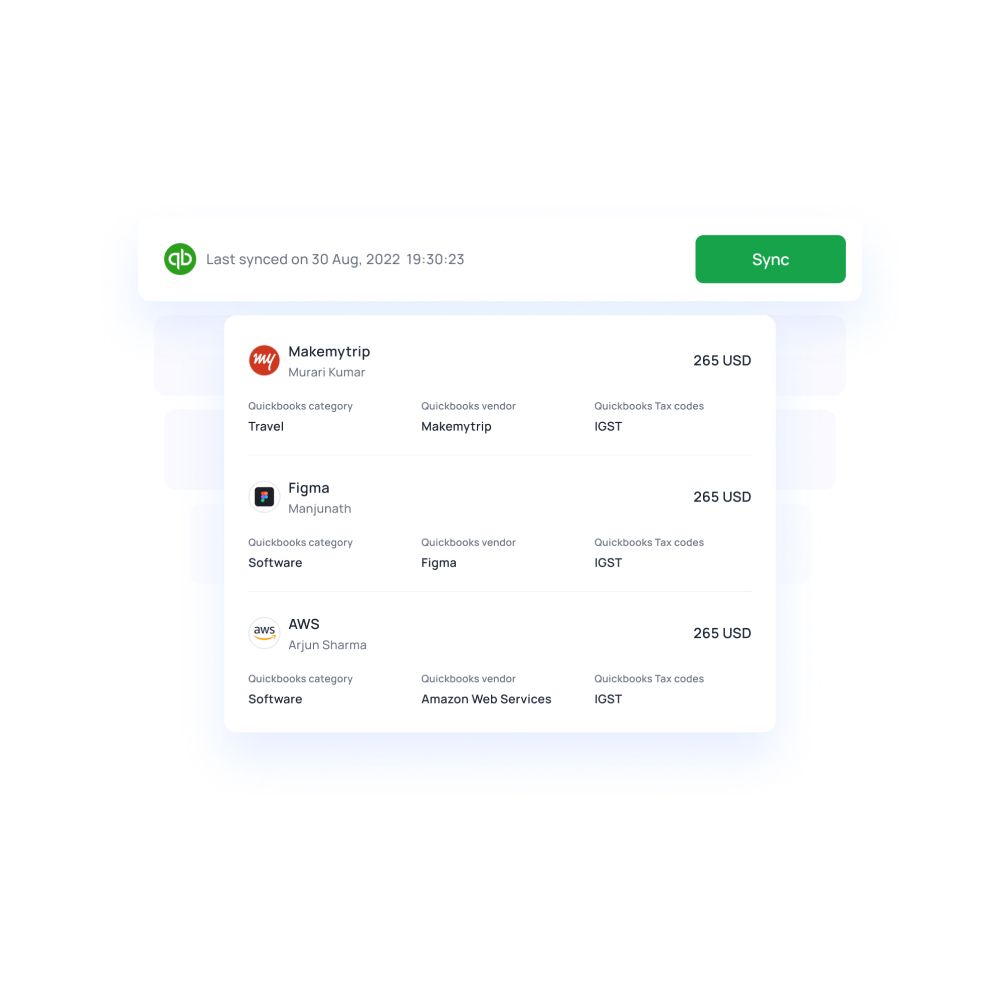
Geofencing
Location-dependent operations are a common requirement for multiple businesses, particularly those that rely on the live location of certain processes for compliant operations (such as service aggregators or logistics, to name a few).
If your company has operational workflows that work around geofencing triggers, then Volopay’s dashboard can be custom-made to meet your accounts payable automation needs. These customizations tailor processes that fit your company’s strategic goals, making it an essential tool for CFOs automating AP process to streamline financial operations and enhance visibility into the company's spendings.

Simplify your financial reporting across multiple entities with Volopay!
Magic Scan
Volopay leverages the power of AI-driven OCR (optical character recognition) technology through its Magic Scan feature. This feature lets teams scan and automatically transcribe data from physical or non-editable digital documents, reducing the burden of manual data entry.
Magic Scan can be used to boost invoice processing efficiency, as well as efficiency in processing other documents such as reimbursement claims and receipts—the exact requirements of your business allow you to customize this workflow.
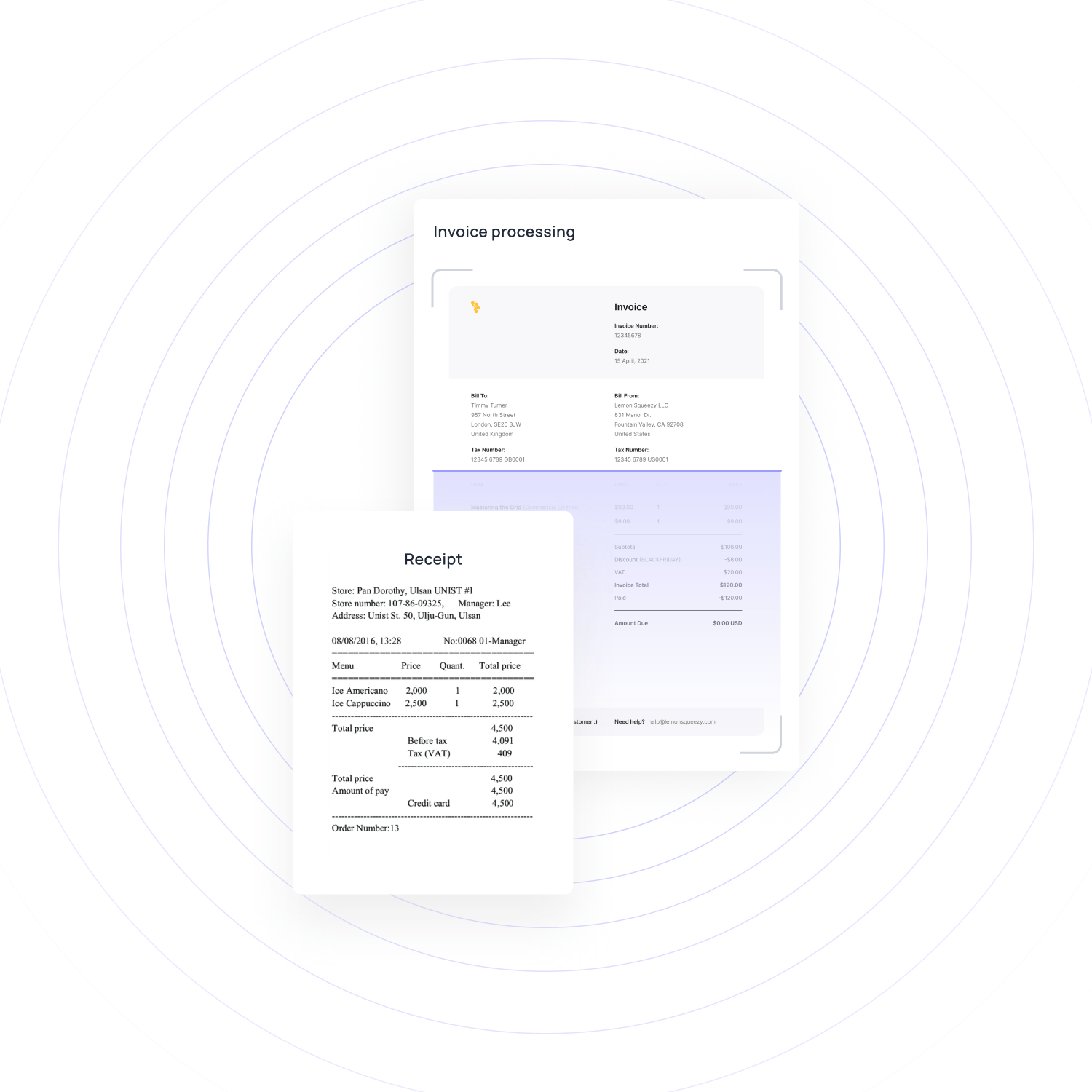
Netsuite custom field integrations
If your company uses Netsuite for its ERP software requirements, then you can integrate your Volopay dashboard data seamlessly with the help of native integration. This includes the transfer of all extracted data and ledger records, as well as any custom fields that were created on your Netsuite accounting dashboard.
The integration reduces time spent on manual data processing, and Volopay can help by customizing the Netsuite integration to recognize custom fields and map data accurately across platforms.
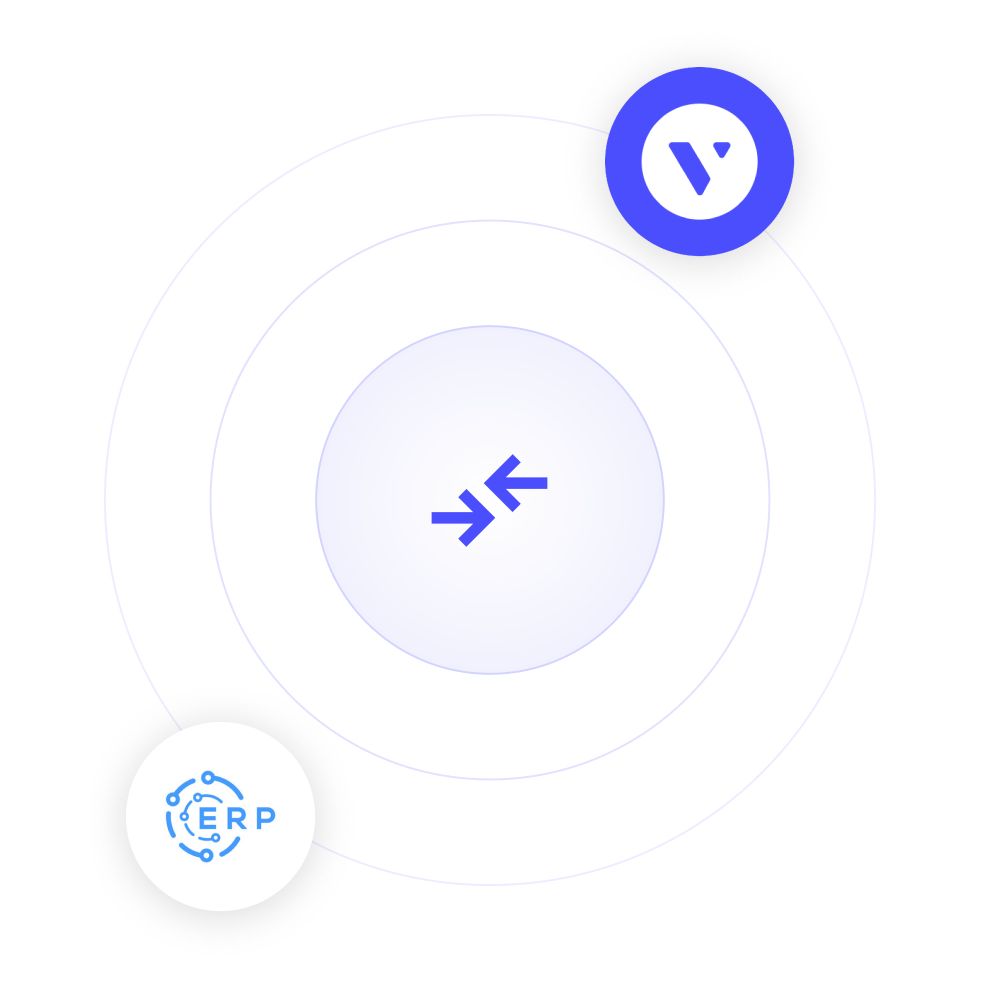
Customizable expense report
The format and information present in an expense report are only helpful when they meet the requirements of company policies, which are designed to glean relevant information for helpful insight. These policies are, in turn, dependent on regulations, budgeting processes, or any forecasting methodologies that your team uses.
To minimize the need for manual data entry, Volopay can customize expense reports so that your employees can generate and submit expense reports in a way that complies with your policies and also offers meaningful information that is relevant to your business needs.
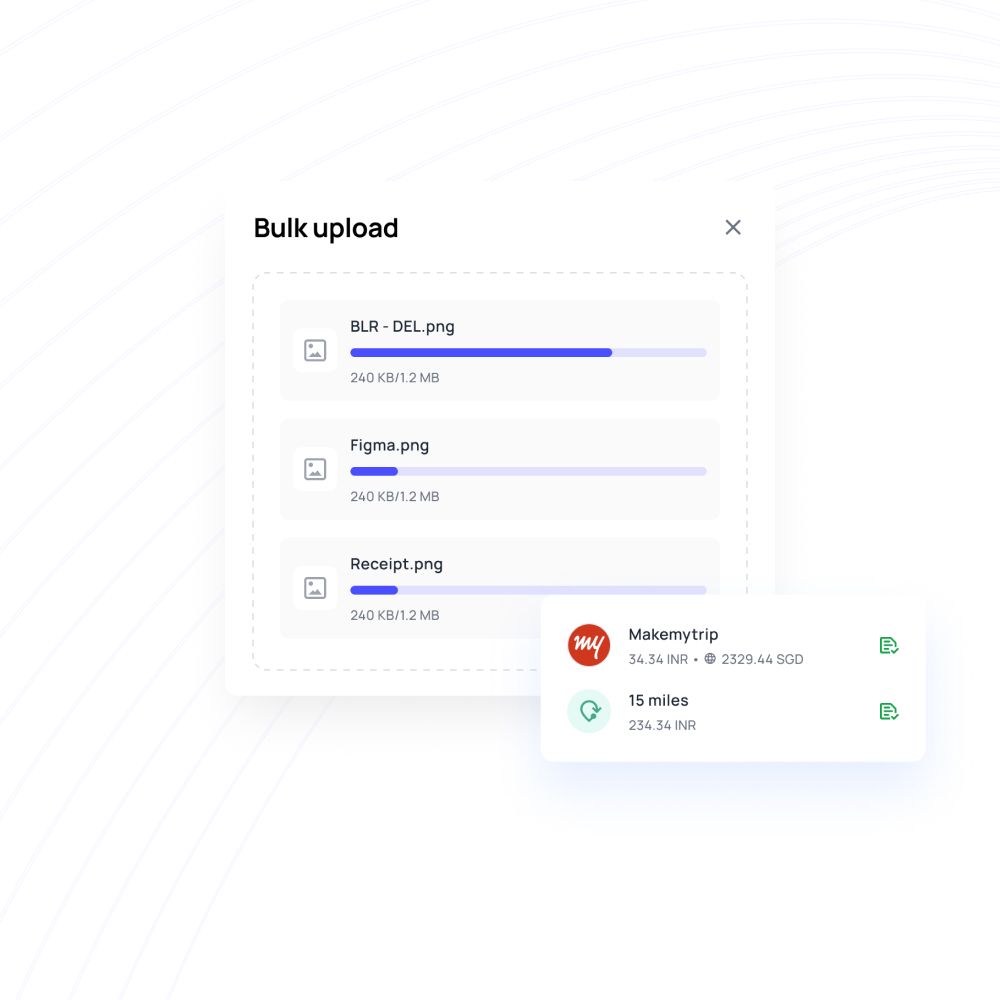
Customizable multi-level workflows
A major part of financial automation is the automation of multi-level workflows, which further reduces the amount of time spent on manual data analysis and decision-making. It is also important that workflows operate on multiple levels to maximize productive output and create a system that your company can effectively rely on.
These workflows include data synchronization needs, accounting needs, expense reporting needs, payment approvals, as well as reimbursement approvals. Volopay can customize workflows that cater to your operational structure and automate your specific processes.
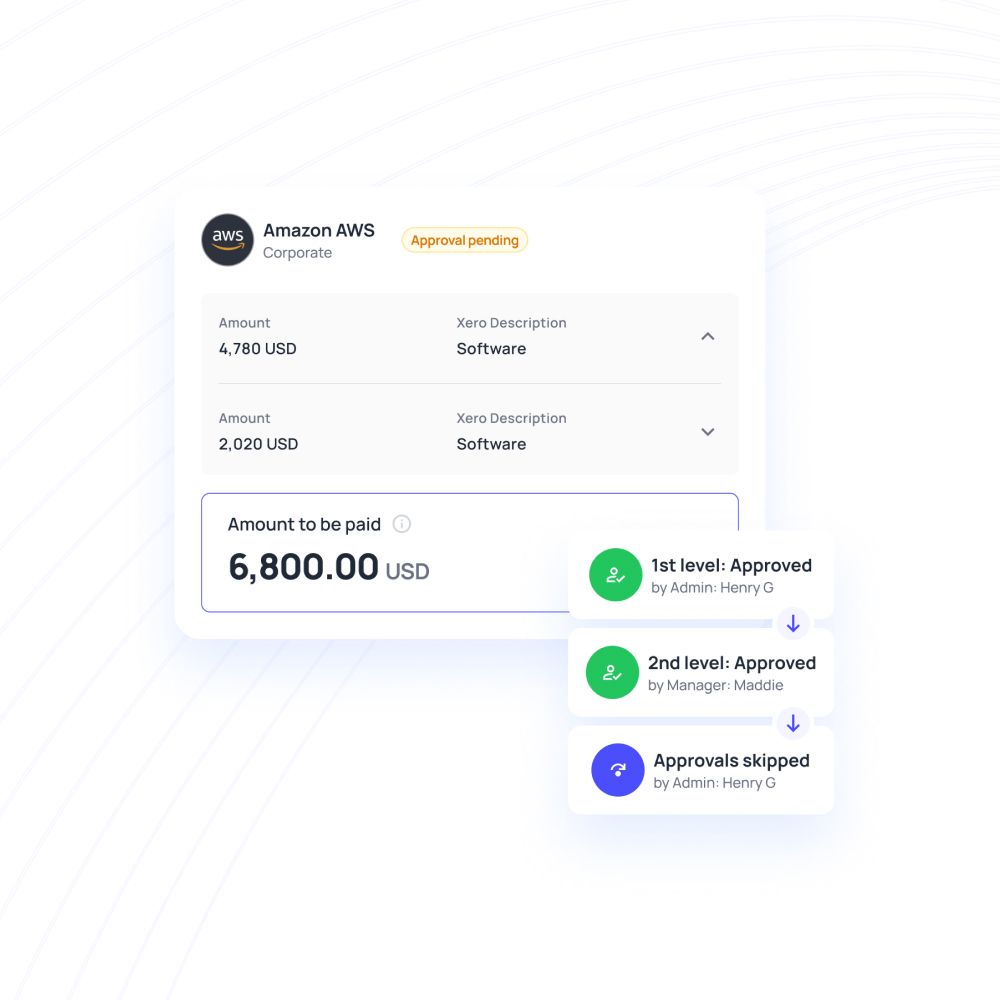
Customizable reimbursement report
Reimbursement reports often face issues with budgets, slow approvals, and most importantly, non-compliance with company spending policies. In order for a reimbursement report to be useful, it needs to follow employee expense usage policies, as well as any regulatory requirements that surround payroll processing and reporting.
Volopay can customize reimbursement reporting automation based on your organization’s policies so that approvals are quick, non-compliant requests are automatically flagged or declined, and reimbursement payouts are sped up.
